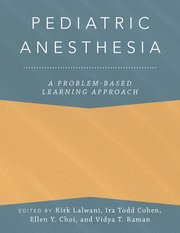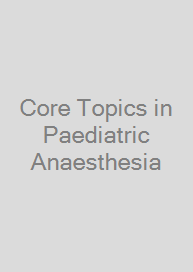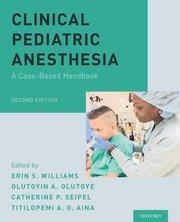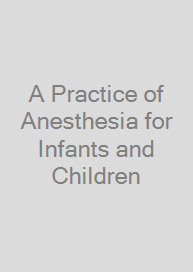Pediatric Anesthesia
A Problem-Based Learning Approach
| Auflage | 2019 |
| Seiten | 632 pp. |
| Verlag | Heinemann Publishers Oxford Customer Services Dept. |
| ISBN | 9780190685157 |
| Artikel-Nr. | 616361 |
Lieferzeit ca. 5 Wochen
Produktbeschreibung
Linking existing knowledge to new knowledge by presenting it in the form of a case or a problem is a popular and effective educational approach resulting in better retention of the knowledge and improved ability to apply that knowledge to solve real problems. This problem-based learning (PBL) method was introduced into medical education at McMaster University in Ontario, Canada, in 1969. Since then it has been widely incorporated into secondary, undergraduate, and graduate education in a variety of disciplines worldwide.
This new volume for the Anesthesiology Problem-Based Learning series reviews pediatric anesthesia utilizing the PBL approach. Each chapter deals with conditions and problems in pediatric anesthesia practice presented as a case stem with questions to encourage critical thinking, followed by an evidence-based discussion and multiple-choice questions for self-assessment. Cases were carefully selected to present a broad systems-based tour of commonly encountered clinical cases in pediatric anesthesia.
The book can be used to review an upcoming clinical case or as a PBL tool. The " sections can serve as the basis for interactive learning experiences for study groups or as a broad yet in-depth clinical review of the subspecialty for the individual learner. Self-assessment questions can be used as a measure of knowledge acquisition or simply as a question bank to prepare for examinations.
This new volume for the Anesthesiology Problem-Based Learning series reviews pediatric anesthesia utilizing the PBL approach. Each chapter deals with conditions and problems in pediatric anesthesia practice presented as a case stem with questions to encourage critical thinking, followed by an evidence-based discussion and multiple-choice questions for self-assessment. Cases were carefully selected to present a broad systems-based tour of commonly encountered clinical cases in pediatric anesthesia.
The book can be used to review an upcoming clinical case or as a PBL tool. The " sections can serve as the basis for interactive learning experiences for study groups or as a broad yet in-depth clinical review of the subspecialty for the individual learner. Self-assessment questions can be used as a measure of knowledge acquisition or simply as a question bank to prepare for examinations.

Bleiben Sie informiert!
Melden Sie sich für den frohberg.de-Newsletter an und nutzen Sie jetzt Ihre Vorteil:- Willkommens-Dankeschön: Beatmungsmaske Rescue Me
- Aktuelle Neuerscheinungen und Empfehlungen
- Exklusive Angebote und Kongress-Highlights






